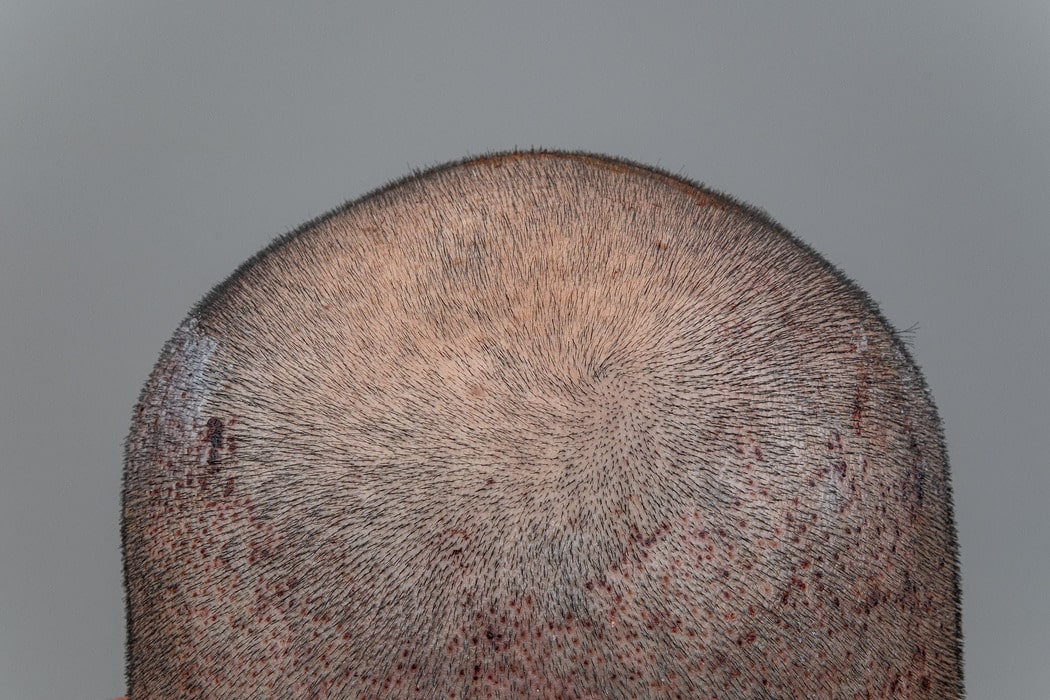In his exhibition The Practical Guide to Gardening, opening on 23 January 2025, Esvin Alarcón Lam combines intimate photographs with his in-depth, ongoing exploration of bamboo – a material that is both symbolically and practically significant to his artistic practice. The artist uses bamboo as both a metaphor and a medium to explore themes of identity, queerness and colonialism.
Image above: The Practical Guide to Gardening (after Marlene NourbeSe Philip), 2024, Credits: Hazel Kılınç & Deniz Karagül.
At the heart of the exhibition are self-portraits documenting the healing process following a hair transplant. These intimate images reveal a vulnerable side of the artist, inviting viewers to reflect on societal expectations of masculinity and beauty, as well as of gender and the body. In Alarcón Lam’s work, the body becomes both a site of healing and an act of quiet rebellion—a reclamation of agency that is as personal as it is political.
Alarcón Lam connects this bodily experience with the histories of bamboo, a plant whose introduction and transplantation to Central America reveals traces of colonial exploitation. Imported by the United Fruit Company, bamboo was first cultivated in the Lancetilla Botanical Garden in Honduras, a site emblematic of colonial extraction. Established in the 1920s, the garden functioned as a testing ground for “exotic” plants to be acclimated to the region’s climate, enabling the establishment of monocultures tailored to U.S. markets. Bamboo, in this context, became both a commodity and a tool of control.
This history is closely connected to the role of botanists, who often became instruments of dispossession and oppression in colonized territories. One such example is Floyd McClure, who worked for both the USDA and the US Army, embodying the intersection of science and imperialism. McClure imported bamboo from China to America—officially for agricultural purposes, but also to fulfill military goals. During World War II, bamboo ski poles were used by the 10th Mountain Division, an elite unit of the Colorado Rangers, to navigate difficult terrain. These ski poles, functioning as extensions of the human body, enhanced the soldiers’ mobility in challenging landscapes.
The work White Snow / Mud Trails expands on these themes by critically examining landscapes and their connection to colonial and military narratives. With this work, the artist challenges the romanticized view of landscapes as idyllic spaces, instead highlighting their function as sites of power and control. The traces in the mud resemble the ski tracks of luxury resorts and draw a line to military operations.
Through these complex interconnections, Esvin Alarcón Lam also addresses the cultural symbolism of bamboo. Often exoticized as a symbol of Asian culture, bamboo is loaded with stereotypes that Alarcón Lam confronts as a Chinese-Guatemalan artist operating within global contexts. By reinterpreting the colonial and cultural history of bamboo, he shows how such narratives have been instrumentalized and commercialized, both historically and in contemporary global contexts.
With The Practical Guide to Gardening, the artist directs attention to the painful stories of transplantation and transformation—both in relation to his own body and to bamboo. He shows how personal and cultural interventions leave traces that speak of both loss and resistance. Like bamboo, which was transplanted into foreign landscapes through colonial practices, his body tells a story of adaptation and overcoming, of vulnerability and the possibility of putting down new roots. The artist invites us to understand identity, the body, and culture as processes shaped by rupture, migration, and renewal.
Esvin Alarcón Lam is a multidisciplinary artist based in Guatemala City. His practice interrogates themes of identity, cultural heritage, and socio-political history, often utilizing reclaimed materials and symbolic objects.
Alarcón Lam was a fellow of the DAAD Artists-in-Berlin Program. Alongside his exhibition at Künstlerhaus Bethanien, he will also have a show at daadgalerie, running from January 17 to March 20, 2025.
WHEN?
Vernissage: Thursday, 23 January 2025, 7 pm
Exhibition dates: Friday, 24 January – Sunday, 16 February 2025 Tuesday – Sunday: 2 – 7 pm
WHERE?
Künstlerhaus Bethanien
Showroom
Kottbusser Straße 10
10999 Berlin
COSTS?
Free admission






